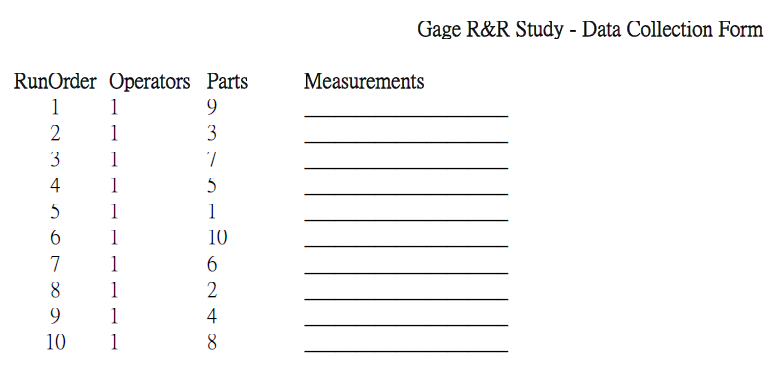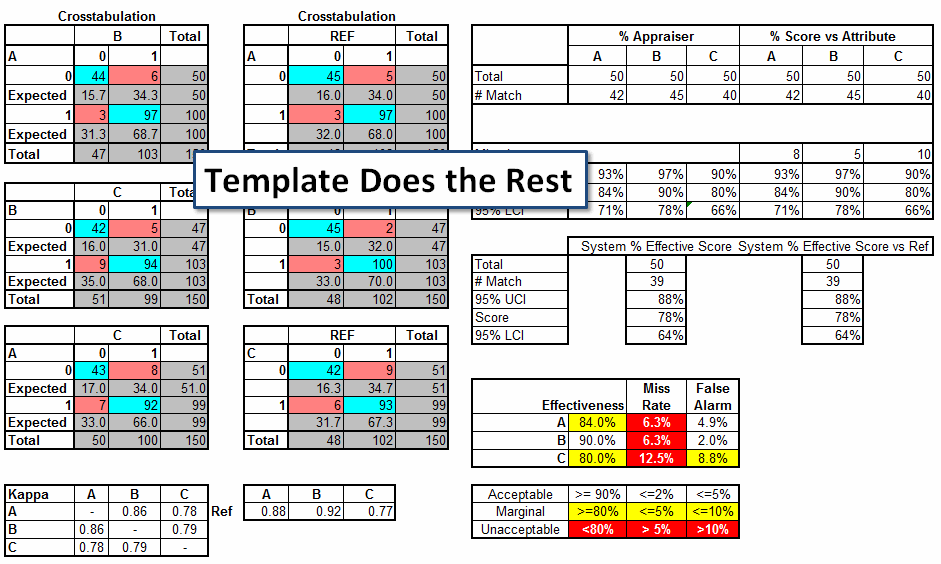

→ Implement the best solution – train employees. → Determine the best “practical solution” (may require some experimentation). → Brainstorm with the team for improvement solutions. Improvement points in Gauge R&R study in MSA ⇢ A fixture may require to use the Gauge/Instrument in an appropriate manner. ⇢ Calibrations on the instrument is not clear
Type 1 gage study minitab how to#
⇢ The appraiser needs to be better trained in how to use and read the instrument. ➨ If reproducibility is large compared to repeatability, then possible causes may be: ⇢ The clamping or location for gauging needs to be improved ⇢ Other reason may be the instrument should be redesigned to be more rigid ➨ If Repeatability is large compared to Reproducibility, then the reasons may be: → Again, this is an indication that the measurement system needs improvement.Ĭorrection Criteria of Measurement System Analysis: → The integer value of NDC should be greater than or equal to 5. → It is similar to looking at how many possible values there are on a Range Control Chart. → This is a measure of the number of distinct categories that can be distinguished by the measurement system. ➨ Also, we will check the number of distinct categories (ndc) in Gauge R&R Study. → But the study indicates that the measurement system must be improved. → Sometimes you can look at the %AV and %EV to get insights into where to start improving the measurement system. → In this example, the measurement system needs improvement since the value is greater than 30%.
Type 1 gage study minitab tv#
➨ Green: GRR % 30% of TV (Measurement system needs improvement) → The following guidelines can be used to determine if the measurement system is acceptable, conditionally acceptable, or not acceptable. → The number that most people focus on first is the % GRR. → The Calculation is mentioned in the below picture. → All appraiser measures the reading each part 3 times. → In this analysis, we have selected three appraisers (A, B, and C) and five parts that represent typical variation in the length output. → Analyze data in the Gauge R&R worksheet. → Enter the number of operators, trials, samples and specification limits → Open the above mentioned Excel worksheet to record data then enter the data related to your process. → Be sure that an appraiser cannot see his/her results from previous trials. → This cycle is continued until you have completed all trials. → This process continues for each appraiser. → Start with appraiser A - measures the parts in random order. → Example trial1 – first in order, trial2 - second in reverse order, trial3 - third random). → All appraisers measures the reading each part 3 times. Step 4: Conduct the Measurements & Put data into Excel: and label the parts from 1 to n, but we have to take care of one thing that the appraisers must not aware of these things otherwise we can not get a proper result → Now we have to designate the appraisers and A, B, C, etc. Step 3: Label the parts & designate appraisers A, B, etc. → If appropriate, calibrate the instrument or verify that the last calibration date is valid. → In other words, don't just take 10 parts off the line right in a row. They should be selected in the proper method that they cover all possible variants of the manufacturing process. → The parts should be selected to reflect the range of variation in the process. → The next step is selecting the parts to include in the study. Step 2: Select the parts & measuring instrument: → This gives more confidence in the results. → In addition, the n*k should be greater than 15. → The number of trials (r) must be greater than or equal to two.

→ The appraisers (k) must be greater than 2. → The number of parts (n) must be greater than or equal to 5. Conduct the Measurements & put data into the Excel Template.Label the parts from 1 to n and designate the appraisers A, B, etc.Select the part & measuring instrument for the study.Determine the number of parts, appraisers, and trials.GRR Study (Gauge R&R) Example with Excel:


 0 kommentar(er)
0 kommentar(er)
